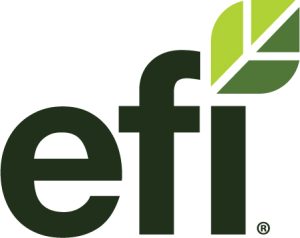The Fireside Chat Series gives members of the fresh produce industry who are curious about Equitable Food Initiative (EFI) an opportunity to hear directly from EFI staff through casual conversations that explore important aspects of the EFI Program.

This episode’s chat features a conversation between EFI’s Marketing and Sales Manager, Madelyn Edlin, and EFI’s Training Manager, Ana (Lulu) Rivera Collazo, about what continuous improvement looks like on EFI-certified operations.
“With EFI, you have a constant self-assessment happening through the eyes of every employee in the company as they look at the work environment, food safety, health and safety issues. Everyone is looking for ideas, diversity and inclusion all the time. It becomes part of the regular business of the company.”
– Ana (Lulu) Rivera Collazo, Training Manager for EFI
What is continuous improvement?
(Find the full response starting at minute 0:51)
Think of continuous improvement as a process of collaboration between management and the workforce to identify issues where improvement is needed and to seek out new ideas to improve processes and relationships within the company. As part of the organizational culture, continuous improvement processes are meant to increase workforce satisfaction, product quality and a company’s ability to grow and advance its goals.
How do improved staff relationships affect a continuous improvement culture?
(Find the full response starting at minute 1:30)
A continuous improvement culture is manifested through the relationships between people who work at the company. Relationships and communication between employees and management are the base of a continuous improvement culture.
Examining communication processes and styles is one of the first steps in facilitating a move toward establishing a continuous improvement culture.
EFI Leadership Teams have a big part to play in establishing inclusive communication systems. It’s important that a Leadership Team is representative of different work areas and different levels of the company, including management and workers, and be inclusive of languages and cultures represented at the company. These diverse teams can work together to bring everyone to the table and ensure information goes out to the workplace in all languages spoken in the company.
When everyone is included, communication is strengthened.
Where do you see the most impact from continuous improvement?
(Find the full response starting at minute 2:21)
The impact of continuous improvement for a company isn’t just in one area or a specific department. The EFI approach to continuous improvement engages the entire workforce through the EFI Leadership Team and the impact is wholistic, touching all parts of the company through an organizational culture shift. It’s going to impact workers, working conditions, processing systems, product quality, buyer relationships and how consumers see the brand.
One impact EFI has seen often involves workers taking on increased responsibility and ownership of their role in the success of the company as a response to having the value of their voice and perspective acknowledged though the company’s new communication systems and culture.
We also see wide-spread improvements to process efficiency, product quality, food safety and worker health and safety concerns as the entire staff becomes engaged in a daily, continuous self-assessment. Every person has access to a platform to bring their concerns, suggestions and ideas, making improvements possible every day.
What does continuous improvement look like in action?
(Find the full response starting at minute 6:00)
A favorite story of Lulu’s captures the way that a focus on improvements to a business can also touch the individual lives of the people working in that business.
One member of an early EFI Leadership Team didn’t understand why he had been chosen to represent his work area on the team. He couldn’t read or write and had never been to school and felt unqualified to be in a leadership role at work. But, after going through the EFI training and participating in the work of the Leadership Team, he saw the value his perspective brought to the table and that he and others on the team who also lacked formal education did have leadership roles in the organization among their peers. That boost in confidence gave him the motivation to learn to read and write and complete his education so he could offer his help to others. Through his advocacy, his employer started a leadership program for its employees and he became the notetaker.
“For me it’s so amazing when we start working at a company, we think about products, we think about retailers, sales, but EFI is not only changing culture of the business, it’s changing people’s lives.”
– Ana (Lulu) Rivera Collazo, Workforce Development Specialist for EFI
What would you say to someone considering taking the next step toward EFI certification?
(Find the full response starting at minute 10:12)
A change of culture might look very difficult and it does come with growing pains, but when you look at the results after those growing pains and those difficulties, the results are worth the effort. With EFI you get a lot of support through those growing pains, so you’re not alone and the return on investment is value added to the company, its people and the product.
Consumers are looking out for people and for companies that want to do more and who show a commitment to the product and how it’s created. If you’re interested in having a leading company that is responding to the demands of the market, EFI is the way to go.
I’m ready to learn more about EFI, what’s next?
Let’s have a conversation. Reach out to Madelyn Edlin or send an email to info@equitablefood.org.
Links to other conversations in the Fireside Chat Series
Fireside Chat 1: Is EFI Right for My Business?
Fireside Chat 2: What are Worker-Led Improvements, Who Benefits From them and Do They Work?
Fireside Chat 4: What Does Corporate Responsibility Really Mean?
Summary written by: Amy Beth Dingle, Freelance Writer for EFI

